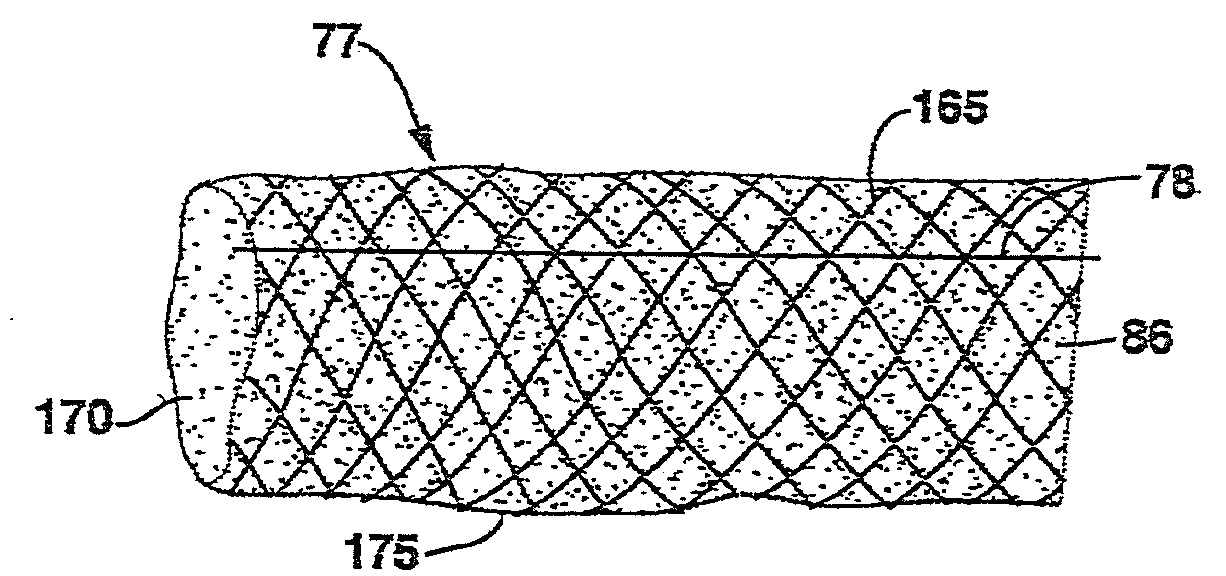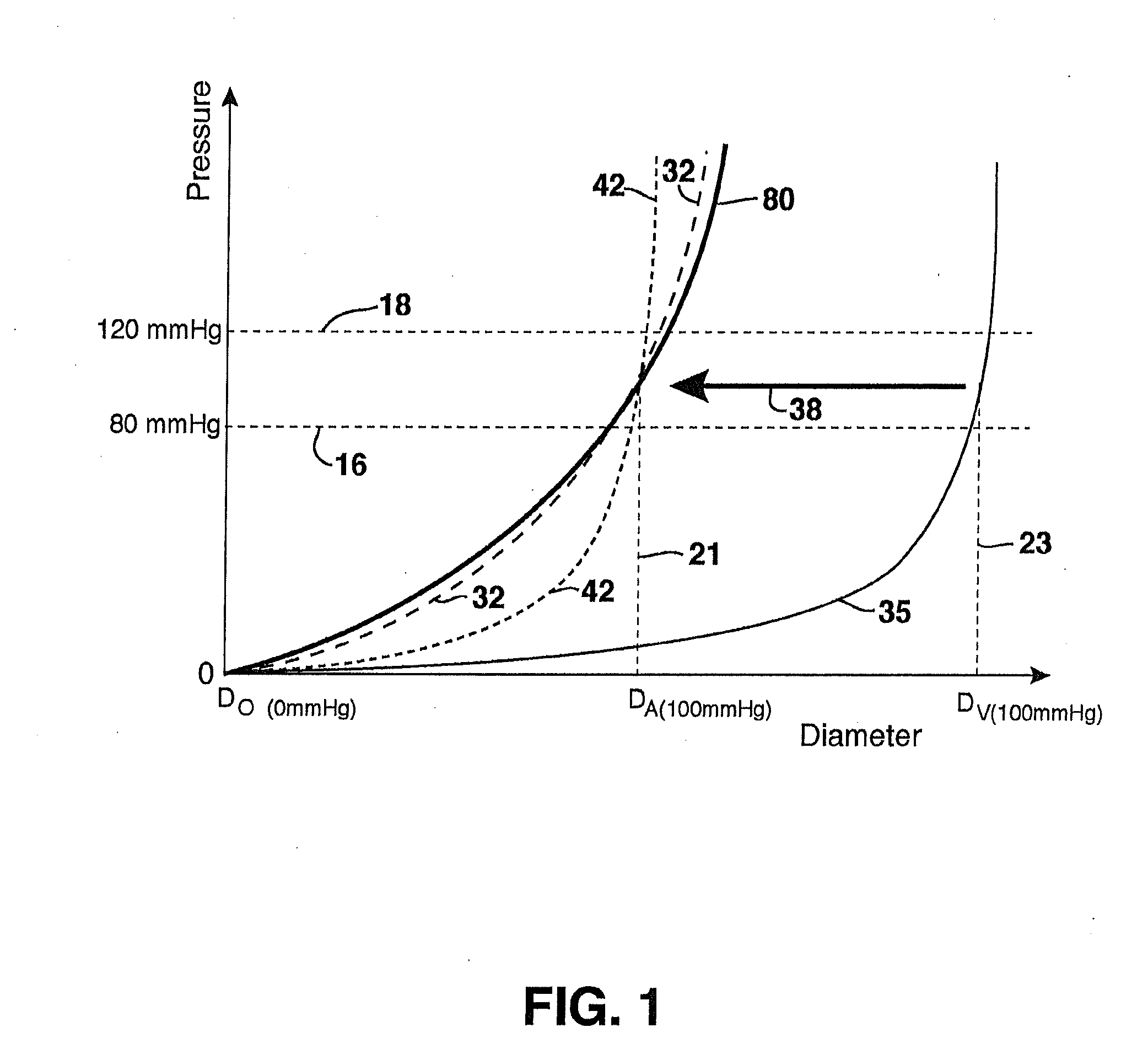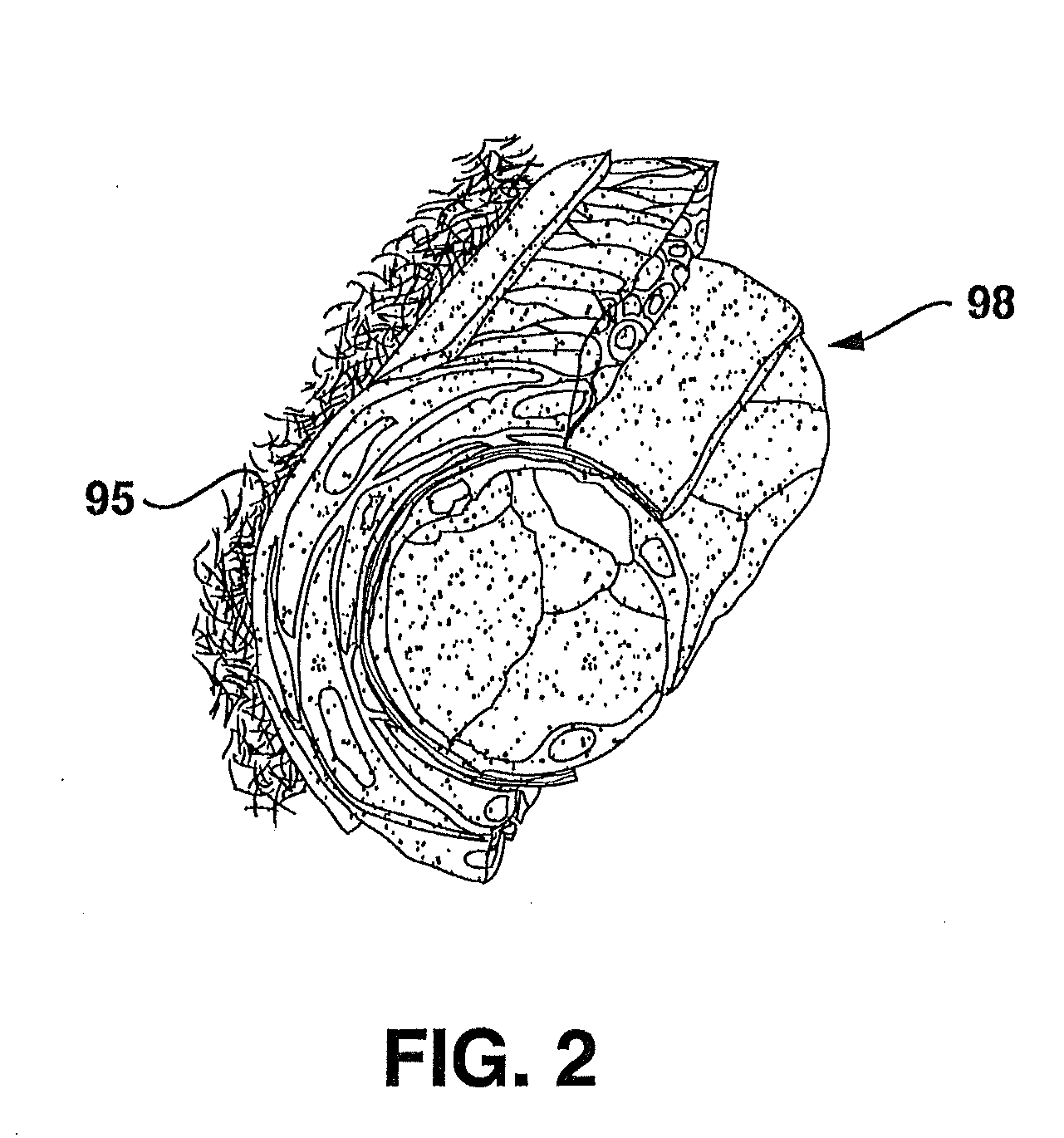Compliant Venous Graft
a venous graft and venous technology, applied in the field of venous grafts, can solve the problems of increased stress, graft failure, and disturbed flow patterns
- Summary
- Abstract
- Description
- Claims
- Application Information
AI Technical Summary
Benefits of technology
Problems solved by technology
Method used
Image
Examples
Embodiment Construction
[0033]Applicants have recognized that significant deficiencies attend to the past methodologies and devices relating to the increased pressures experienced by vein grafts utilized in arterial positions. The increased pressures lead to excessive dilation of vein grafts in arterial circulation, leading to the development of intimal hyperplasia, which causes occlusion of the vessel.
[0034]Intimal hyperplasia is believed to be a primary reason for vein graft failure. In this context it is known that intact endothelium acts in a manner to protect against the proliferation of underlying vascular smooth muscle cells, known as VSMC. The intact endothelium also plays a role in VSMC contractile responses. The VSMC have also been shown to release factors with long term physiological effects on the endothelial cells, including maintenance of a non-proliferative state. By comparison, the pathogenesis of intimal hyperplasia in a vein graft may follow the sequence of dilatation under arterial press...
PUM
| Property | Measurement | Unit |
|---|---|---|
| pressure | aaaaa | aaaaa |
| pressure | aaaaa | aaaaa |
| pressure | aaaaa | aaaaa |
Abstract
Description
Claims
Application Information
 Login to View More
Login to View More - R&D
- Intellectual Property
- Life Sciences
- Materials
- Tech Scout
- Unparalleled Data Quality
- Higher Quality Content
- 60% Fewer Hallucinations
Browse by: Latest US Patents, China's latest patents, Technical Efficacy Thesaurus, Application Domain, Technology Topic, Popular Technical Reports.
© 2025 PatSnap. All rights reserved.Legal|Privacy policy|Modern Slavery Act Transparency Statement|Sitemap|About US| Contact US: help@patsnap.com



